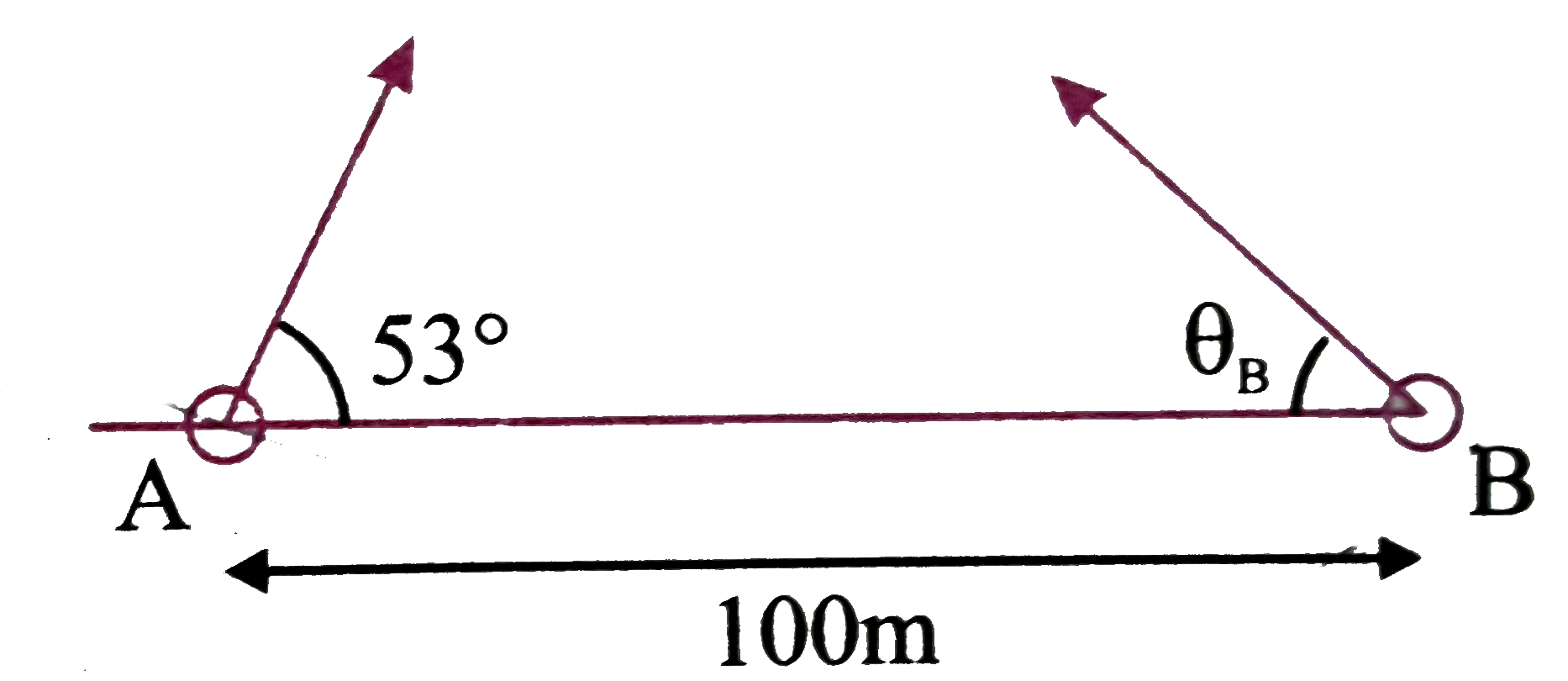A particle A is projected verically upwards. Another indentical particle B is projected at an angle of 45∘. Both reach the same height. The ratio of the initial kinetic energy of A to that of B is −Solution in Gujrati
1:2
2:1
1:√2
√2:1
The correct Answer is:A
v1=v2√2⇒12mv2112mv22=12
Topper's Solved these Questions
- TEST PAPERBOOK - ALLEN CHAPTER - TEST PAPEREXERCISE - PHYSICS
4 Videos
- TEST PAPERBOOK - ALLEN CHAPTER - TEST PAPEREXERCISE - PHYSICS
4 Videos
- SIMPLE HARMONIC MOTIONBOOK - ALLEN CHAPTER - SIMPLE HARMONIC MOTIONEXERCISE - Example
1 Videos
- TEST PAPER 1BOOK - ALLEN CHAPTER - TEST PAPER 1EXERCISE - PHYSICS
11 Videos
Similar Questions
Choose the correct statement:
View SolutionChoose the correct statement:
View SolutionA rod with rectangular cross section oscillates about a horizontal axis passing through one of its ends and it behaves like a seconds pendulum, its length will be
View SolutionWhy are electric field lines perpendicular at a point on an equipotential surface of a conductor ?
View SolutionTwo stones of masses m and 2 m are projected vertically upwards so as to reach the same height. The ratio of the kinetic energies of their projection is
View SolutionTwo particles A and B are projected in same vertical plane as shown in figure.Their initial positions (t=0), initial spped and angle of projections are indicated in the diagram.If initial angle of projection θB=37∘, what should be initial speed of projection of particle B, so that it hits particle A.UA=60m/s

View SolutionA particle A is projected verically upwards. Another indentical particle B is projected at an angle of 45∘. Both reach the same height. The ratio of the initial kinetic energy of A to that of B is −
View SolutionA ball P is projected vertically up. Another similar ball Q is projected at ari angle 45∘. Both reach the same height during their motion. Then, at the starting point, ratio of kinetic energy of P and Q is?
View Solutiontwo particles are projected upwards with the same initial velocity v_(0) in two different angles of projection such that their horizontal ranges are the same. The ratio of the heights of their horizontal ranges are the same. The ratio of the heights of their highest point will be
View SolutionThe verical of point above the ground is twice that of Q. A particle is projected downward with a speed of 5 ms^(-1) from P and at the same time another particle is projected upward with the same speed from W. Both particle reach the ground simultaneously, then
View SolutionThe ratio of maximum height reached by a particle projected under gravity to its horizontal range is 1:4 The angle of projection initially is
View SolutionA body A is projected upwards with velocity v_(1) . Another body B of same mass is projected at an angle of 45^(@) . Both reach the same height. Calculate the ratio of their initial kinetic energies.
View Solutionदो प्रक्षेप्य A और B को अनुपात 1:√2 की चाल से फेंकने पर दोनों समान ऊँचाई तक पहुँचते है। यदि A को क्षैतिज से 45∘ कोण पर प्रक्षेपित किया जाता है, तब B का प्रक्षेपण कोण होगा
View SolutionA particle B is projected upwards from the projection angle and H reaches a maximum height. Time taken to reach maximum height
View SolutionA particle P is projected vertically upward from a point A. Six seconds later, another particle Q is projected vertically upward from A. Both P and Q reach A simultaneously. The ratio of maximum heights reached by P and Q=64:25.Find the velocity of the projection of Q in m/s.
View SolutionA particle A is projected verically upwards. Another indentical particle B is projected at an angle of 45∘. Both reach the same height. The ratio of the initial kinetic energy of A to that of B is −
View Solution
